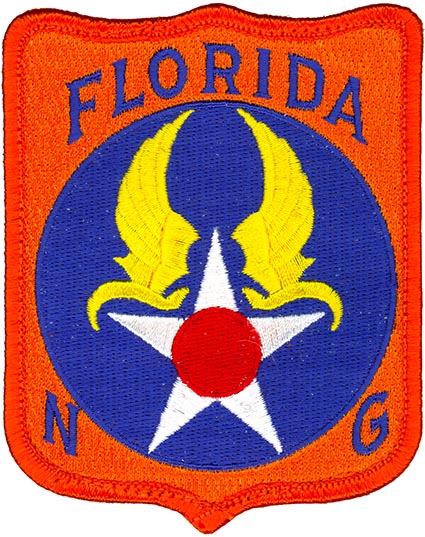Description
Computer made/mounted on velcro 4.0 inch-100mm
HEADQUARTERS FLORIDA AIR NATIONAL GUARD
Location: Joint Forces Headquarters, St Francis Barracks, St. Augustine, FL
Mission: To provide leadership, guidance, and peacetime command and control of all Florida Air National Guard units to meet both federal and state missions
History: On 24 May 1946, the United States Army Air Forces, in response to dramatic postwar military budget cuts imposed by President Harry S. Truman, allocated inactive unit designations to the National Guard Bureau for the formation of an Air Force National Guard. These unit designations were allotted and transferred to various State National Guard bureaus to provide them unit designations to re-establish them as Air National Guard units.
A National Guard Bureau document dated 16 Mar 1946, gave states permission to request an Army Air Forces unit allotment. Months later, Florida accepted the 159th Fighter Squadron with an authorized strength of 50 officers and 303 enlisted men. The unit was established at Imeson Airport in Jacksonville and Governor Millard F. Caldwell formally accepted the unit on 30 Aug 1946. Full federal recognition of the unit was granted on 9 Feb 1947, when it became a National Guard unit under the U.S. Army Air Forces. However, 18 Sep 1947 is considered to be the Florida Air National Guard’s official birth, concurrent with the establishment of the United States Air Force as a separate branch of the United States military under the National Security Act of 1947.
In 1954, the 159th relinquished their F-51s for F-80 Shooting Stars and in 1956 upgraded again to F-86 Sabres. On 1 Jul 1956, the 159th Fighter-Interceptor Squadron was authorized to expand to a group level organization and the 125th Fighter-Interceptor Group (125 FIG) was established by the National Guard Bureau, with the 159 FIS becoming the group’s flying squadron. Both organizations remained operationally gained by the Air Defense Command (ADC) and in 1960 transitioned to the F-102 Delta Dagger.
In 1968, ADC was renamed Aerospace Defense Command and remained the 125 FIG’s gaining command. That same year, the 125 FIG and its F-102 aircraft relocated from the soon-to-be closing Imeson Airport to a newly constructed military installation at the new Jacksonville International Airport. This was followed by another aircraft transition in 1974 to the F-106 Delta Dart.
With the disestablishment of ADC in Oct 1979, operational claimancy of the 125 FIG was shifted to Tactical Air Command (TAC) and the unit transitioned to the F-16 Fighting Falcon in 1987. With the disestablishment of TAC in 1992, the 125 FIG was renamed the 125th Fighter Group (125 FG) and in Oct 1995 it was expanded to a wing level organization and renamed the 125th Fighter Wing (125 FW), operationally gained by Air Combat Command (ACC). The same year, the 125th also transitioned from the F-16 to the F-15 Eagle, the aircraft that it continues to fly today.
Another Florida ANG flying unit, originally designated as Detachment 1, Southeast Air Defense Sector (Det 1, SEADS), is the 325th Fighter Wing Associate Unit (325 FW AU), which was officially activated on 1 Oct 1999 at Tyndall AFB, FL. The unit’s initial mission was to train active duty and Air National Guard pilots to fly the F-15 Eagle in its F-15A/B and F-15C/D variants in the air dominance role. The Associate Unit members were completely integrated into all aspects of the active duty 2nd 43rd and 95th Fighter Squadrons, as well as the 325th Operations Support Squadron. Today, the unit continues that mission training responsibility for active duty Air Force, Air Force Reserve and Air National Guard pilots to fly the F-22 Raptor in the air dominance role. The associate unit is operationally controlled by the 325th Operations Group under the overall direction of the 325th Fighter Wing.
After the September 11th 2001 terrorist attacks on the United States, elements of every Air National Guard unit in Florida have been activated in support of the Global War on Terrorism. Flight crews, aircraft maintenance personnel, communications technicians, air controllers and air security personnel were also engaged in Operation Noble Eagle air defense overflights of major United States cities. Florida ANG units have been deployed overseas as part of Operation Enduring Freedom in Afghanistan and Operation Iraqi Freedom in Iraq, as well as other overseas locations as directed.
